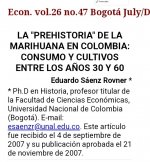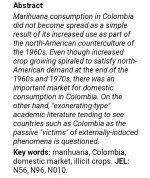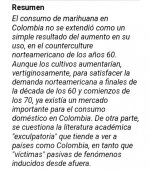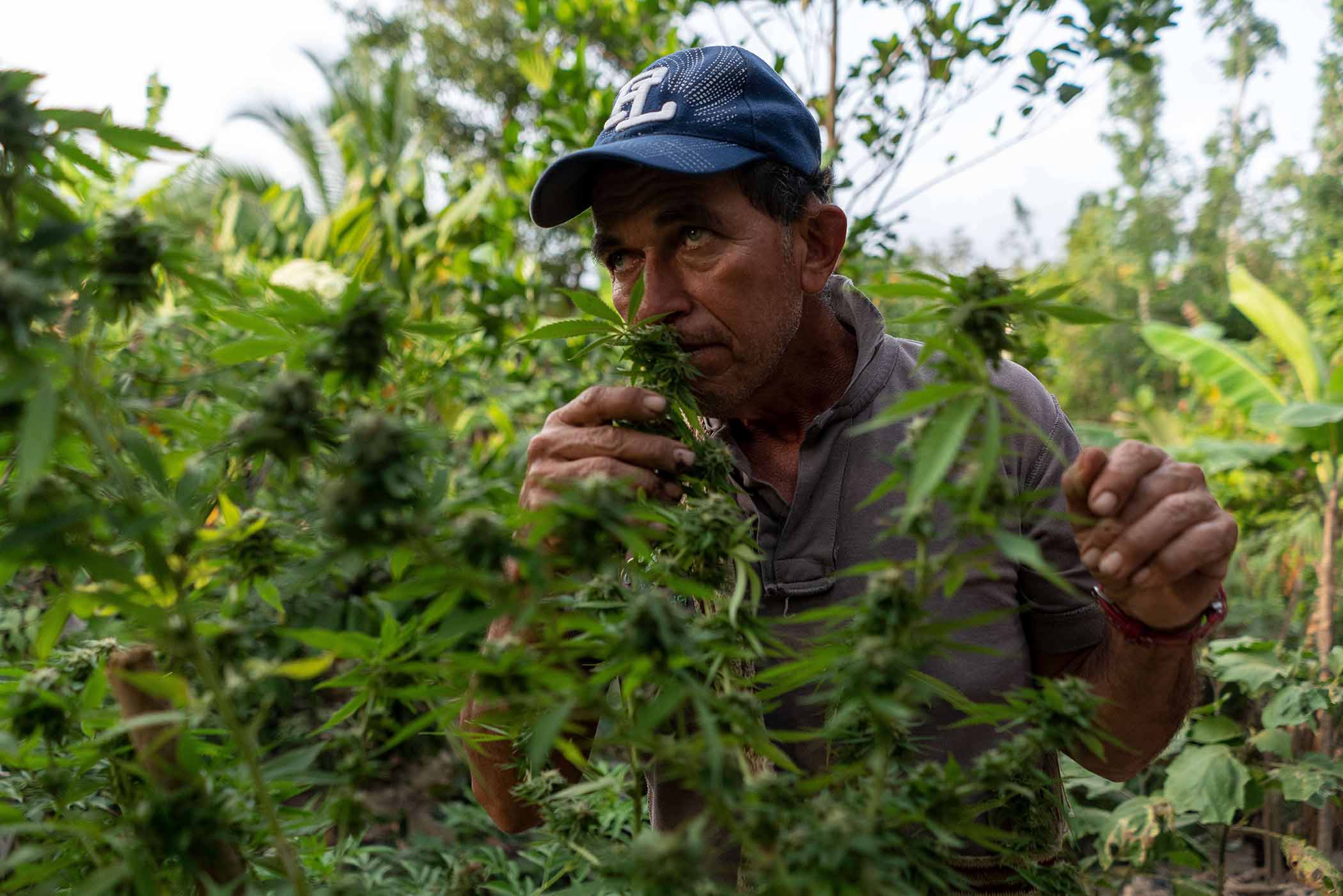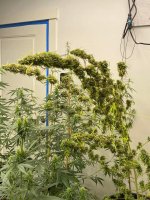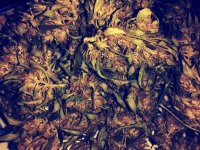Well it seems that some folks need some clarity in reference to Colombian landrace Cannabis origins and true history not derived from American Drug War propagandist magazines like a 70's issue of TIME; which is worth the read if you can read between the lines and lies.
The following text is pretty self explanatory but in short it documents internal Colombian recreational Cannabis use dating back to the 1930's.
Heres a link to the full document that is in Spanish but i'm sure the curious will easily have it translated by Google or AI.
Ive also included a couple of images of the document with names and dates and all that 'fact worthy' paraphenelia that accompany scientific and scholarly papers and a brief summary translation in English.
Colombias recreational/spiritual Cannabis culture and history were not born in the 60's or even the 50 's or 40's, it goes way further back than any N. American narrative or reference and this is just what has been documented.
Also included a bud of the real non-hybridized Colombian Punto Rojo for your viewing pleasure.
for your viewing pleasure.
Hope you dig it.
The following text is pretty self explanatory but in short it documents internal Colombian recreational Cannabis use dating back to the 1930's.
Heres a link to the full document that is in Spanish but i'm sure the curious will easily have it translated by Google or AI.
Ive also included a couple of images of the document with names and dates and all that 'fact worthy' paraphenelia that accompany scientific and scholarly papers and a brief summary translation in English.
Colombias recreational/spiritual Cannabis culture and history were not born in the 60's or even the 50 's or 40's, it goes way further back than any N. American narrative or reference and this is just what has been documented.
Also included a bud of the real non-hybridized Colombian Punto Rojo
Hope you dig it.

